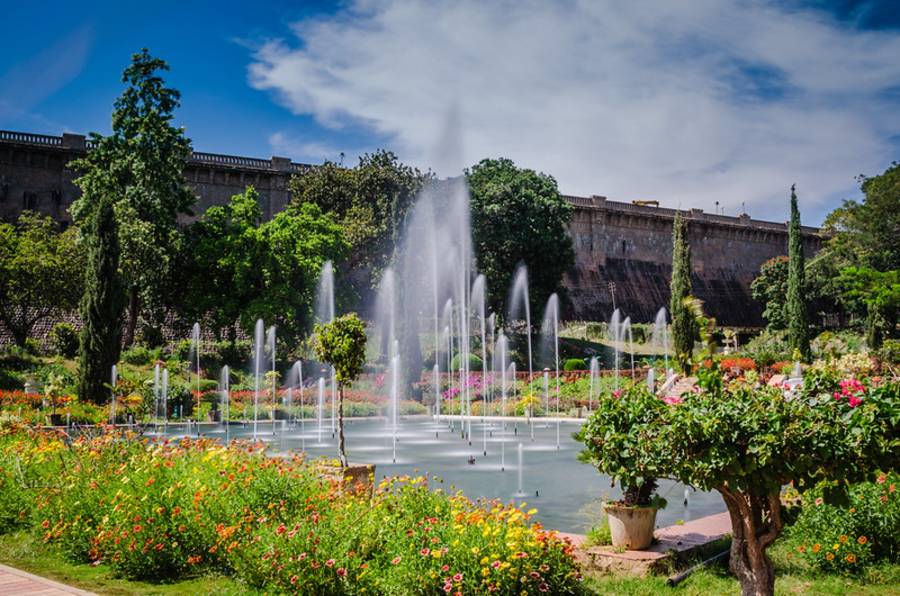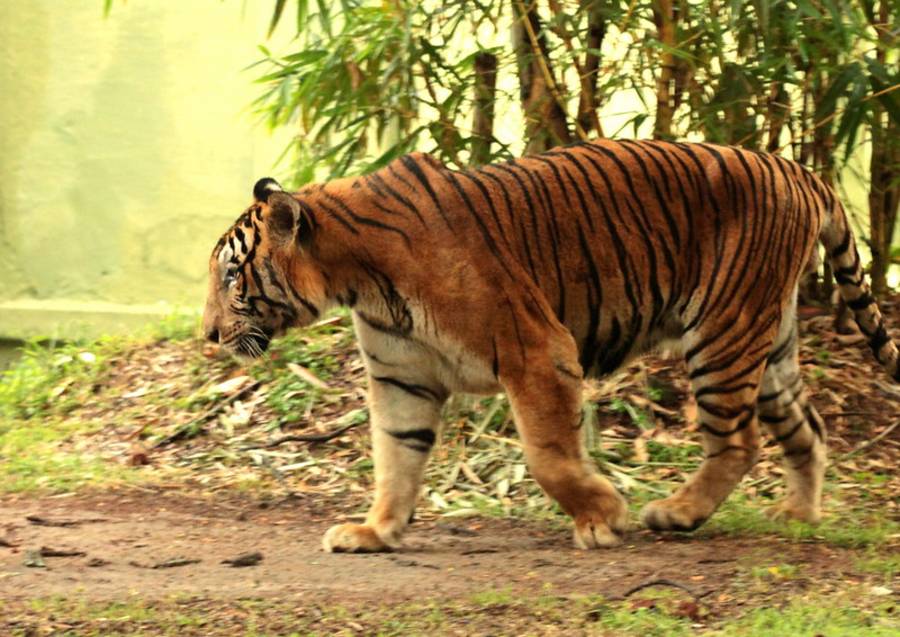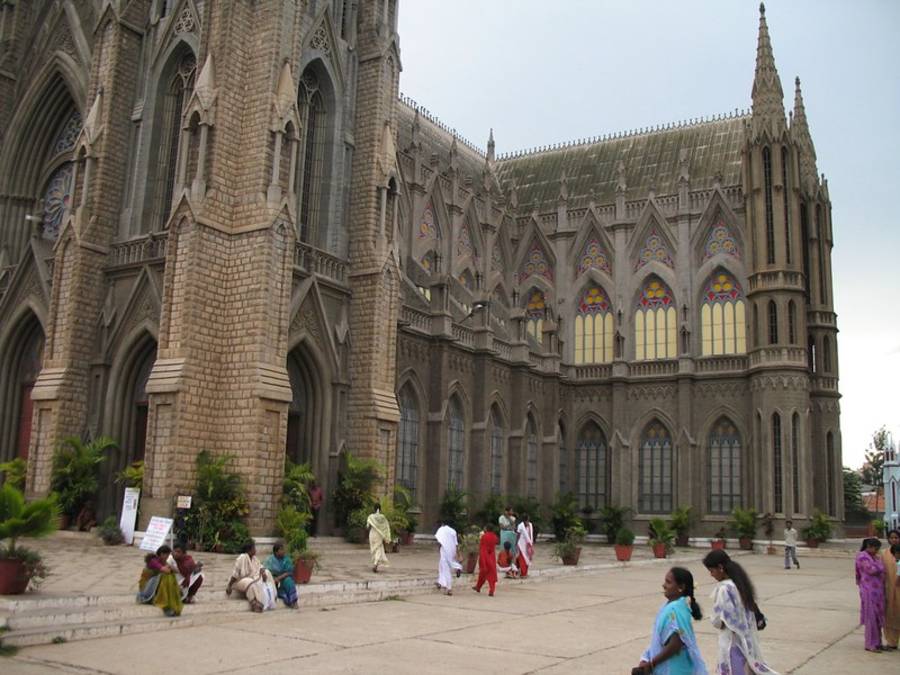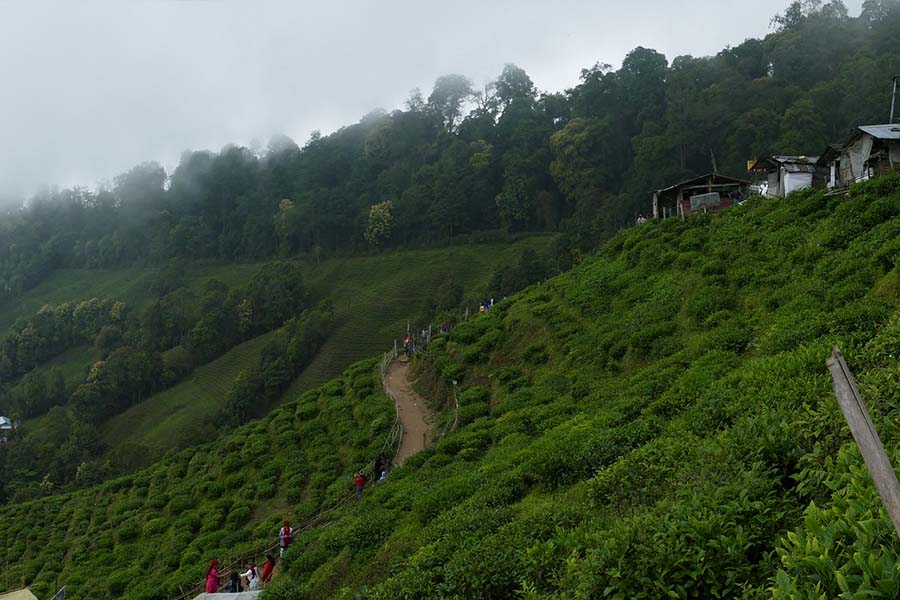Mysore Palace
Mysore Palace is a historical palace located in the city of Mysore in the southern Indian state of Karnataka. It is also known as the Amba Vilas Palace and is considered to be one of the most magnificent palaces in India. The palace was originally built in the 14th century and was later reconstructed and expanded by various rulers.
The palace is a fine example of Indo-Saracenic architecture, which is a blend of Hindu, Muslim, Rajput, and Gothic styles. It features a beautiful blend of intricate carvings, paintings, and other decorative elements that reflect the rich cultural heritage of the region.
Some of the main features of the palace include the Durbar Hall, which is a grand hall where the king used to hold meetings with his courtiers, the Kalyana Mantapa, which is a wedding hall with a stunning glass ceiling, and the Golden Throne, which is an ornate throne made of gold.
History
The history of the Mysore Palace dates back to the 14th century when a wooden fort was built on the same site by the Wadiyar dynasty. However, the palace in its current form was constructed in the early 20th century by the British architect Henry Irwin, who blended various architectural styles to create the stunning Indo-Saracenic structure that exists today.
The Wadiyars were the ruling family of the Kingdom of Mysore for several centuries, and the palace served as their royal residence. The palace was originally built in the 14th century and was renovated and expanded over the years by various rulers.
In 1565, the original wooden palace was destroyed during the battle of Talikota. Later, in the 17th century, a new palace was built on the same site, but this too was destroyed by fire in 1897. The current palace was built to replace the earlier structure.
During the reign of the Wadiyars, the palace was the center of the kingdom’s political and cultural life, and the royal family held grand ceremonies and festivities in its halls. The palace was also an important center of art and culture, and many famous musicians, poets, and scholars visited it.
After India gained independence in 1947, the Wadiyars agreed to merge the Kingdom of Mysore into the Indian Union, and the palace was converted into a public museum. Today, the palace is one of the most popular tourist attractions in India and is a symbol of the rich cultural heritage of Mysore.
How will you gain access?
Bangalore (135 km) is the closest airport. Mysore is located between the cities of Bangalore and Mangalore. Indian Airlines and some other domestic flight operators connect the city with places like Kolkata, Delhi, Chennai, Mumbai, Pune, Ahmedabad, Hyderabad, Goa, Coimbatore, Calicut, and Trivandrum. By rail too, the city is connected to all the key destinations of the country. The city is provided with an excellent road network.
What are the timings and the entry charges?
The visiting hours of the Mysore Palace are from 1000 hours to 1730 hours. The entry fee is Rs 15. An amount of Rs 15 is to be further paid to enter Kings’ personal museum.
What goes behind the architecture?
The Mysore Palace is a symbol of the brilliant Indo-Saracenic style of architecture. It presents exquisite carvings and forms of art from far and wide. The elaborately carved doors take you into luxuriously decorated rooms. The walls paintings of the palace depict a scene of Dussehra Processions. The painting is interesting in the way that, seen from any angle the procession appears to be coming towards you.
The palace had an original build of wood that got burnt down in 1897 AD. No wonder, it was rebuilt in 1912 AD. The palace has now been converted into a museum, exhibiting souvenirs, paintings, jewelry, royal costumes, and numerous other interesting items. The ornate ceiling of the Darbar Hall is a sight to behold. The sculpture pillars are said to have been painted with gold.
What are the nearby attractions?
Brindavan Gardens

The Brindavan Gardens is located abutting the Krishnarajendra Dam. The garden lies on either side of the big artificial lake formed by the dam. The garden has a colored fountain. It has two parts namely the South and the North gardens. The image of Goddess Kaveri stands at the entrance of the garden.
Mysore Zoo

Established under royal patronage in 1892, the Mysore Zoo is counted among the oldest zoos in the world. The animal in the zoo has been brought from more than 40 different countries. The Royal Bengal Tiger, white tiger, elephant, giraffe, Himalayan black bear, Indian bison, white peafowl, Indian rhino, hippos and gorillas can be seen at the zoo.
St. Philomena’s Church

Lying to the north of the city, Philomena’s Church is one of the tallest structures of the place. The church is built in the Gothic style. It is a must-see spot for the visitors of the city.
A Guide To Visiting Mysore Palace
Sightseeing in India can be costly, especially a visit to Mysore’s premier attraction, Amba Vilas Palace. More commonly referred to simply as Mysore Palace, this South India tourist delight will bleed your wallet and patience dry if you aren’t prepared. The following is a guide of what you can expect to pay so you can choose whether a visit to Mysore Palace fits your budget.
Parking Fee
Tourists arriving by pre-paid car and driver or buses will not be charged for parking. This fee is already covered in your India tour cost. Private cars will be subject to a fee of Rs 30 per vehicle.
Entry Fee
The palace has four entrances; Main Gate (East): Jaya Maarthaanda, North Gate: Jayarama, South Gate: Balarama, and West Gate: Varaha. Public Entry is from South Gate.
Cost: Indian Adult Rs 40, Students Rs 10, Children 11 and up to Rs 20, Children under 10 Free. Foreigners Rs 200 (Regardless of age).
Camera Fee
After the ticket counter and past the entry gate, visitors are free to roam the palace campus. Bear in mind photography is not allowed inside the palace. Photos can be taken from outside the palace in any open spaces, however, all visitors are required to leave cameras at a camera check located just inside the entry gate. Cameras are placed into a locker and a voucher is given to the owner. Although the posted signs say this service is free, you’ll most likely be asked for a monetary gift of Rs 5-10 upon redemption of your camera.
Security posted outside the actual palace building will check for cameras and mobile phones before entering. You will be redirected to the camera check if you haven’t disposed of your camera beforehand. Unless, of course, you offer a monetary gift (Rs 20-50) to the security official. It’s a 50/50 chance you’ll be allowed entry with your camera. Countless other visitors use their mobile phones to take photos with little to no hand-slapping for the offense.
Elephant & Camel Fee
Adding to the majestic regal palace feeling is an on-site elephant clad with a howdah for riding. Friendly mahouts will rope you in with big smiles and offers to “just feed the elephant”, before asking for donations as well as offering paid services. Prices varies. A short 5-10 minute ride should cost you no more than Rs 200. An optional camel ride is also available.
Shoe Fee
All visitors are required to discard their shoes prior to entering the palace. You may roam with shoes outside on the palace campus up to the point of entry. A shoe-check stall is located adjacent to the palace entrance. As with the camera check, signs posted advertise this as a free service to tourists. In reality, foreigners will be pressed for monetary gifts of up to Rs 50 per pair of shoes. This preposterous fee can be negotiated to as little as Rs 5 per person. Just be sure you have the exact change. Also, socks are allowed inside.
Audio Fee
An audio tour of the palace is available in English, Hindi, German, Italian, Japanese, and French languages. Charges are as follows: Indians Rs 100 per person; Foreigners Free (included in the cost of the ticket).
Guide Services Fee
Should you opt-out of the audio tour there are guide services available near the shoe stall. Cost varies from Rs 200 to as much as Rs 500. Disregard any selling point of licenses and/or published state fees. Negotiate hard, and be sure to agree on a price before a tour begins ensuring the price is for ALL parties involved, not per person. Suggestion: take the audio tour.
Tour Begins & Ends
You’ll need about 1-2 hours to explore the palace. Enter through Gombe Thotti or the Doll’s Pavilion, a gallery of traditional dolls from the nineteenth and early twentieth centuries. Halfway along is the elephant gate, which is the main entrance to the center of the palace. The Kalyana Mantapa or marriage pavilion with a central octagonal gabled roof, covered by stained glasses, is to the south of the building. The Ambavilasa or Diwan-e -Khas, a hall used by the king for private audiences, is one of the most spectacular rooms of the palace located on the first floor, facing east. On the same floor is the Diwan-e-Aam, facing south. Around the sprawling palace, you’ll also see the portrait gallery, the royal armory, collections of costumes and jewelry, intricately carved doors of mahogany and solid silver, delicate chandeliers, exquisite stained glass ceilings, and decorative frescoes.
Museum Fee
After the tour concludes visitors are deposited through a door near a narrow alley. This passageway leads toward several of the palace temples. Be careful not to get caught up in the chaos of foot traffic in this area or you’ll quickly be asked to pay an additional Rs 200 for what seems like entry into the temples. In fact, it’s the entry fee for the palace museum housed within the private living quarters of the maharaja.
Toilet Fee
By this point, you may be in need of on-site facilities. “Are they free,” you ask? In theory, the toilets are free to use, however, you guessed it, you’ll be asked for a small monetary gift. Rs 1-2 is sufficient.
You’ve reached the end of your tour. Remember to collect your shoes and camera before leaving. But wait! Before you go, there is one more service available.
Sound & Light Fee
A sound and light show (Kannada language only) is held every Monday, Wednesday, and Friday after regular palace timings are concluded. No show is held if the date falls on a public holiday.
Cost: Indian Adult Rs 40, Children Rs 25. Foreigners Rs 200 (includes English audio kit).
Sunday Night Illumination
Mysore Palace is illuminated by more than 90,000 lights every Sunday night, and on public holidays, from 7:00 pm – 8:00 pm. Palace gates are closed, viewing is from public streets around the grounds. There is no cost associated.
Numerous street vendors sell everything from balloons to candy at various prices. Expect slightly inflated fares on tuk-tuk rides, bargain hard for proper rates.
Palace Timings
10:00 AM – 5:30 PM Daily. The best days to visit are Monday through Friday. Expect long queues on weekends.



